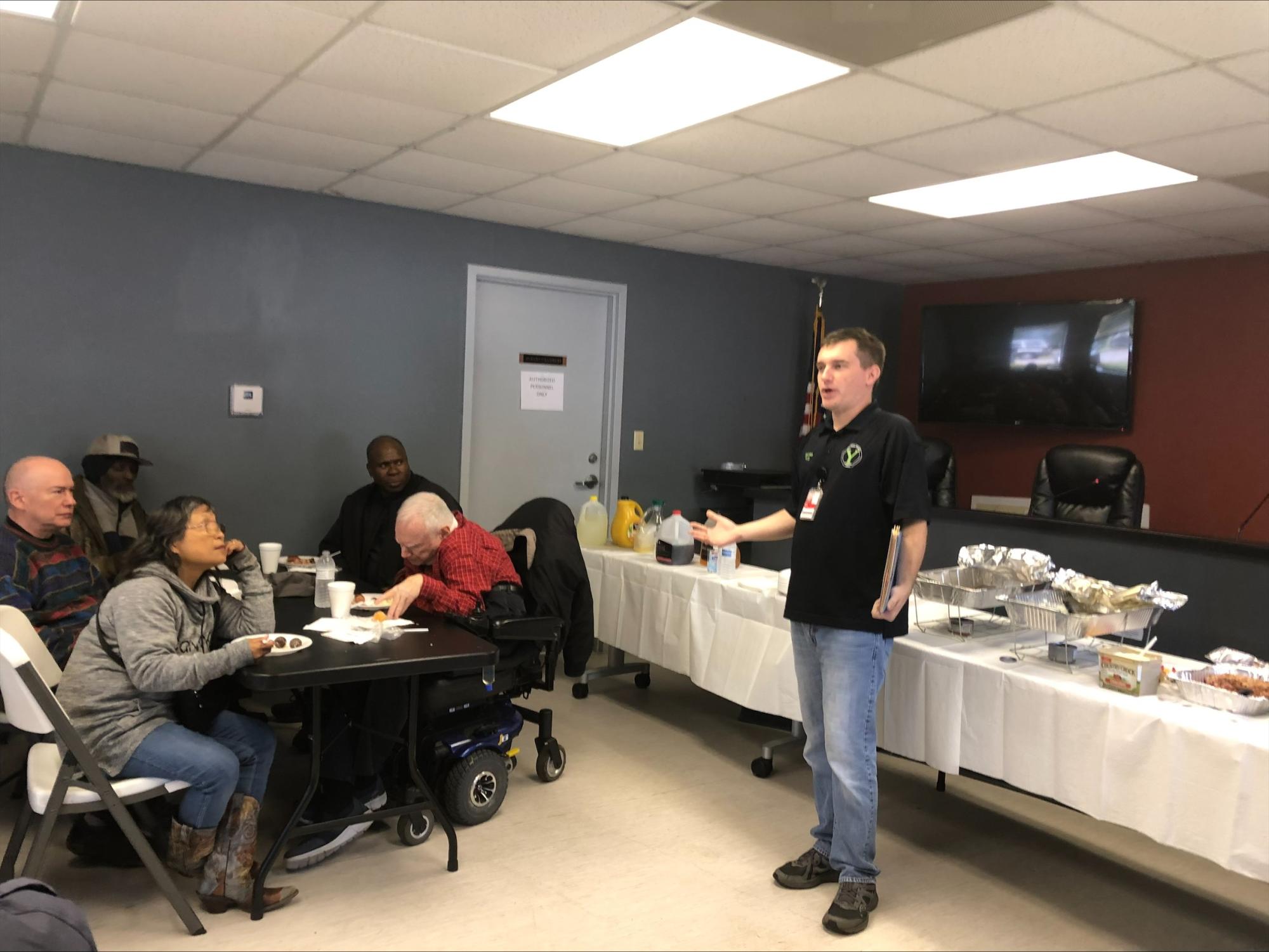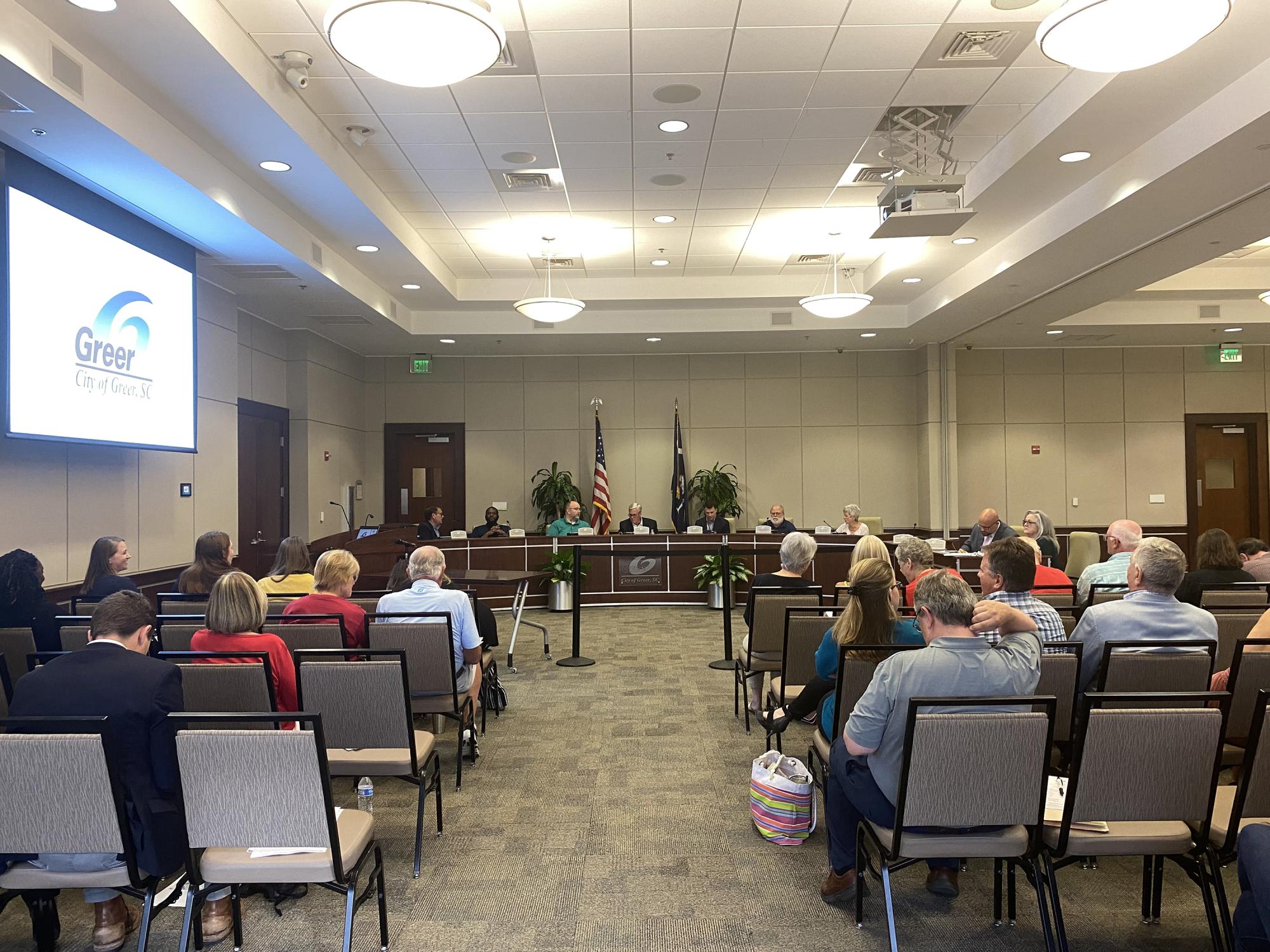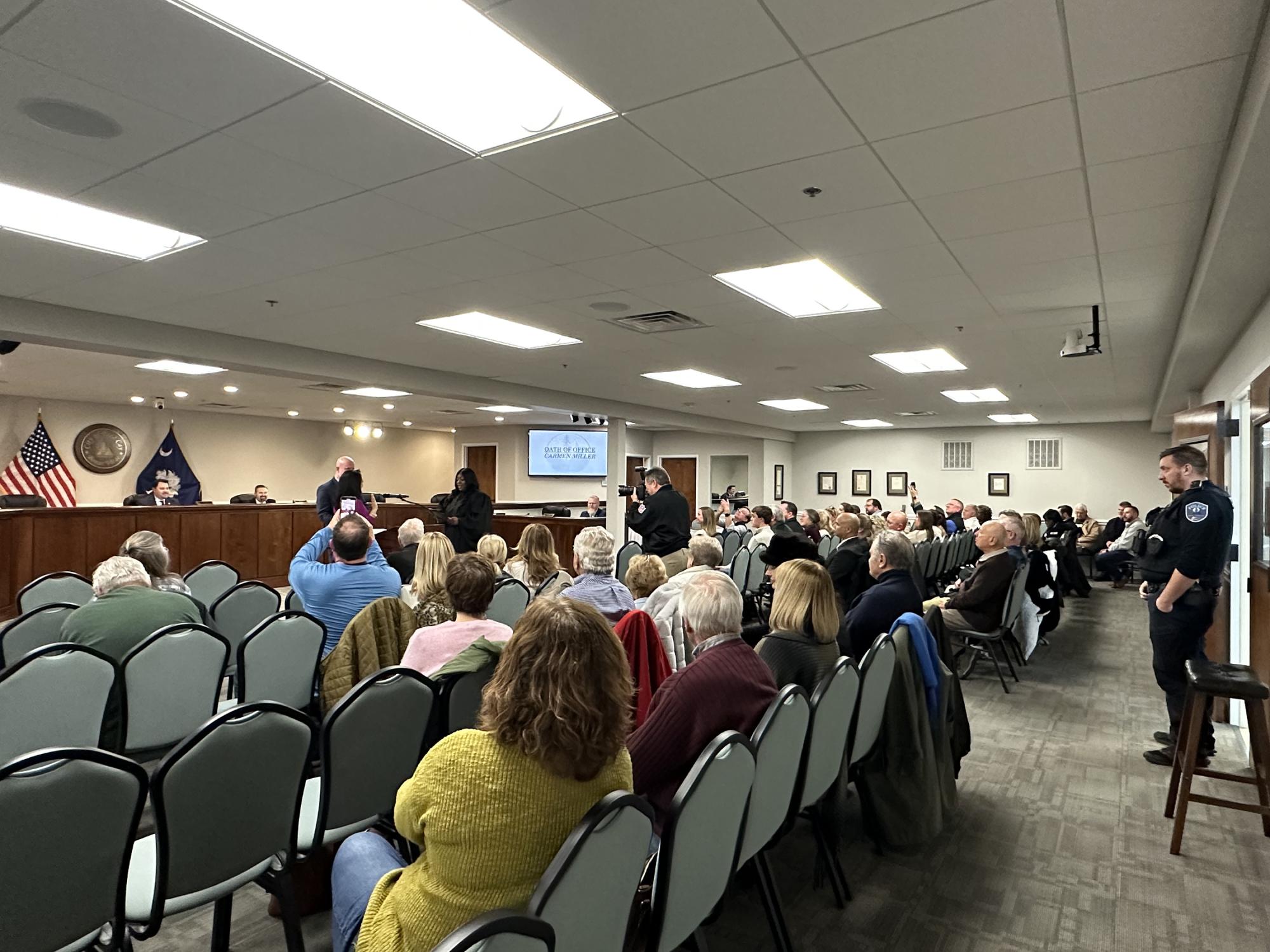The SC Freedom of Information Act requires cities and towns to notify the public about public meetings at least 24 hours in advance. Municipalities must provide the agenda to the local media or anyone who requests it, and post it at the meeting location and on their website, if they have one. But this is the bare minimum.
Many cities and towns go above and beyond merely posting an agenda by distributing agenda packets and supporting materials, and making information available through a wider variety of communications channels in advance of the meeting.
The goal, these municipalities say, is to give residents the information they need to participate in decision-making and to understand why things are being done a certain way.

Yemassee Town Administrator Matthew Garnes speaks at a community zone meeting. Yemassee hosts monthly
meetings in its four planning zones to give updates on projects and events. Photo: Town of Yemassee.
In the Town of Yemassee, the change to a more expansive notification system began in 2018, said Town Administrator Matthew Garnes. He and his team looked at what nearby cities and counties, like Hampton and Beaufort, were doing to see if there was room for Yemassee to improve.
“What we began doing was not only putting up the agenda on our website, but also all the agenda backup material,” Garnes said. “The idea was if the individuals can’t come to the meeting, they’re at least able to grasp an understanding of what the topics are that are going to be discussed and how that could potentially affect them.”
Those materials would include staff reasoning for recommendations, either for or against an agenda item, to provide the public with a better understanding of what was happening in a meeting. The town had just developed a good rhythm and consistency on its messaging when the COVID-19 pandemic shut everything down, Garnes said. Yemassee moved meetings online for seven months.
With the public and elected officials discouraged from meeting in one location, it was even more important to get as much information out as possible. Participants joined meetings remotely via Zoom and the proceedings were broadcast on social media channels.
“That taught us that we need to rethink how we’ve historically made the meetings accessible and how we’re letting people know about them,” Garnes said.
The city created a new website in 2021, and is adding the minutes of council meetings from previous years to create a robust, historically mindful archive.
“We have found meeting minutes as far back as 1999. We are scanning them in and attaching them to where they belong,” Garnes said.
Meetings are no longer streamed, but Garnes said his team is working on a way to get them online again. Attendance at meetings has increased tenfold since returning to in-person. More than 200 residents have signed up to get agendas for council and commission meetings.
The key to the expanded communications is consistency, which became difficult as the amount of information and the distribution channels increased. To keep up with growing demand, the town hired a communications manager who works about 15 hours a week to manage the agenda postings and emails and to produce a weekly newsletter that reviews what happened at the last meeting and what’s on tap for the next meeting.

Greer offers its public meetings as videos on YouTube, and uses social media to share information
about upcoming meetings. Photo: City of Greer.
For the City of Greer, determining how best to reach a diverse population was essential to expanding its meeting notices beyond the requirements of state law.
“Transparency and inclusivity are key for our communications strategy,” said Reno Deaton, Greer’s economic development director. “We recognize that the where, the how and the when that people get information is very different. And so, part of what we want to do is make sure that we are presenting that information in a way, a time and a place where folks can consume it.”
Greer has a team of four workers focused on communications, but also used a consultant to help guide strategy.
“What we learned is that facts are important and we’ve got to be sure we are accurate,” Deaton said. “Folks also want to understand the emotion, the people involved and they want us to tell a full story.”
The city uses social media to amplify messaging and promote ways for residents to get involved. Greer posts regularly about upcoming meetings, as well as recaps of meetings and events. It also broadcasts its public meetings on YouTube.
The communication team can even go more traditional when needed, as seen when the council was considering adopting a unified development ordinance recently. The city mailed reminder postcards about the special meetings connected with that vote in addition to their social media campaign. For its efforts, the city has seen robust growth in social media engagement and increased views of meetings online.

Beyond regular social media announcements of meetings, Tega Cay recently used postcards to highlight public
meetings discussing a unified development ordinance. Photo: City of Tega Cay.
In the City of Tega Cay, sharing information helps residents stay engaged, but can also help the rapidly growing area stay ahead of speculation. In one recent example, the city helped clarify an issue involving its marina overlay district and the sale of a road.
“There had been a lot of confusion about the marina overlay district by the lake, a lot of misunderstanding about what’s going on over there,” said Gretchen Kalar, Tega Cay’s social media and information specialist. “Rather than just covering that at a city council meeting or talking to city staff, we went another route and published a fact sheet to our website. That is one of the top four things that people have gone to our website to find recently.”
She uses a variety of channels to keep residents up to date on meeting agendas, including electronic billboards at city hall. All committee meetings are published there, some as much as two weeks in advance.
For the town’s social media channels, Kalar uses a scheduling app to be sure information gets pushed out at least 24 hours in advance, but also at times when her audiences are most likely to see the posts.
“Those do really well,” she said. “We cover a lot of bases and a big audience when we are trying to alert people to meetings and public hearings.”
Kalar said she is using feedback from residents who want to know more about what’s going on in city government to create more detailed posts for meetings and public hearings. She has learned, however, that engagement doesn’t always mirror interest.
On the Friday afternoon before the council meeting that would be taking up the first step in the town’s deer-culling program, Kalar said her Facebook post on the issue got a single “like” for its total engagement.
“Social media is a learning game,” she said. “Something might go viral and something might not do anything.”
In the case of the deer discussion, that one “like” was not a true gauge of interest. The subsequent meeting was packed.
“Did the post work? Well, we had a packed house at that meeting. People knew about it. At some point they were informed,” she said.
Does changing agenda support material constitute “adding an item to the agenda?”
FOIA requires public bodies post meeting agendas at least 24 hours before the meeting, and then not add any agenda items without an additional 24-hour notice to the public.
Is a change to the materials that accompany the agenda “adding an item” to the agenda? In a recent unpublished decision, the SC Court of Appeals clarified that the agenda itself is only the short list of items to be considered at the meeting, and therefore changing the supplemental materials is not “adding an item” to the agenda.
Municipalities should be careful, however, to clearly distinguish the agenda itself from the supplemental information, which should be described as the “agenda packet” or a similar descriptive term.
